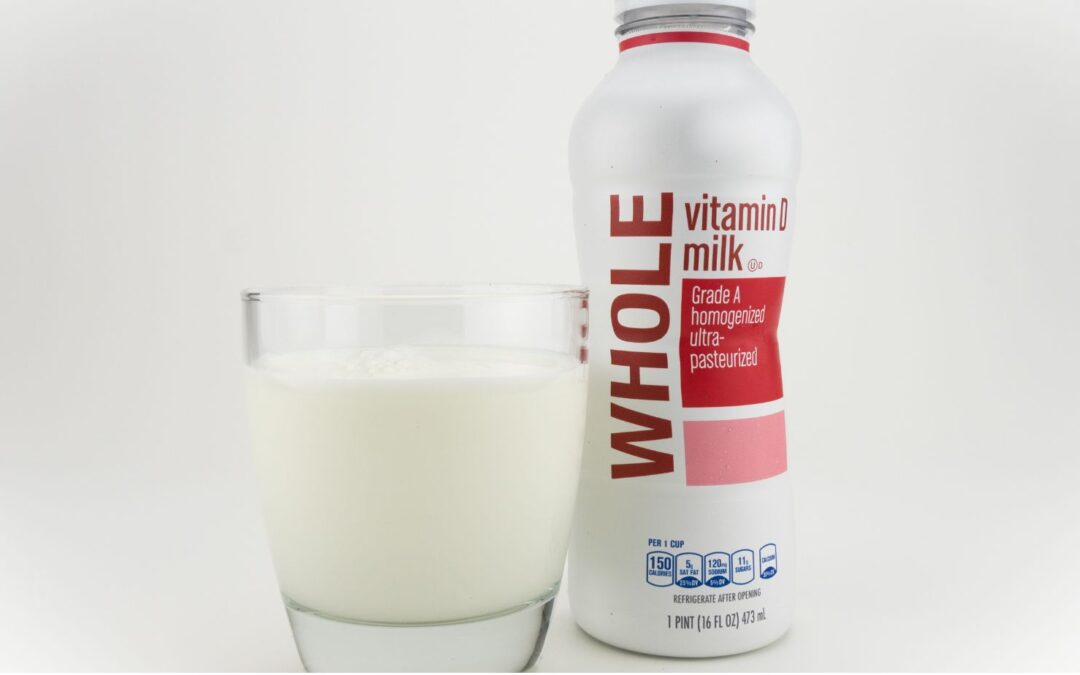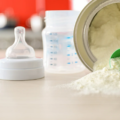Weaning your little one from infant formula to whole milk can be a big step. It’s a transition that requires careful consideration and planning. As first-time parents, you might have questions about the best timing, how to introduce whole milk and potential challenges. This guide will walk you through the process, providing expert tips and advice to ensure a smooth transition.
Timing Is Key
Timing plays an essential role in a successful weaning process. Pediatricians typically recommend starting the transition to whole milk formulas around the age of 12 months, as babies’ digestive systems and nutritional needs evolve at this stage. Whole milk contains higher amounts of certain proteins and fats that babies need, but too much too soon can be difficult for their bodies to handle. Consulting with your pediatrician beforehand is particularly important if your baby was born prematurely or has any health concerns, as they may need extra support or a modified approach.
Choose Whole Milk Over Reduced-Fat Options
Whole milk is a superior choice for toddlers because it contains the full-fat content necessary for proper brain and physical development. Unlike reduced-fat or skim milk, whole milk is packed with essential fatty acids and calories, supporting rapid growth and development in the first two years. The fat in whole milk is especially crucial for brain development, so reduced-fat options should generally be avoided at this stage unless your pediatrician advises otherwise.
Introduce Gradually
A gradual introduction to whole milk can make a difference in helping your baby adjust to the new taste and texture. Rather than switching abruptly from formula to milk, replace just one bottle of baby formula per day with whole milk. Choose a time when your baby is typically calm, such as at mealtime or snack time, so the experience is positive. After a few days, you can add another milk bottle into the routine, progressively working until all formula feedings have been replaced.
Mix Formula with Whole Milk
Mixing formula and whole milk in the same bottle can help ease your baby into the taste of milk gradually. Start by preparing a roughly three-quarters formula bottle and one-quarter whole milk. Over the next week or two, slowly increase the milk proportion to formula until the bottle eventually consists solely of whole milk. This method works well for babies who might be reluctant to try milk on their own. Blending the flavors, you’re helping them become accustomed to the new taste without making the change feel too drastic.
Monitor for Digestive Reactions
Babies can sometimes experience mild digestive issues when transitioning to whole milk, as it’s richer and contains different proteins than formula. Watch for signs of digestive discomfort, such as gas, constipation, or loose stools.

Be aware of potential symptoms of lactose intolerance, which can include diarrhea, vomiting, or irritability after drinking milk. If you notice these signs, pause the transition and consult your pediatrician.
Encourage the Use of Sippy Cups
Transitioning from a bottle to a cup during the weaning process can support your child’s development and healthy habits. Learning to drink from a cup is an important milestone that fosters motor skills and helps toddlers associate milk with mealtime rather than feeding time. Start by offering small amounts of milk in sippy cups, allowing your toddler to practice and build their confidence with this new skill. Not only does using a cup help avoid bottle dependency, but it also promotes good dental health by reducing the time milk is in contact with their teeth.
Maintain a Balanced Diet
While whole milk provides essential nutrients like calcium, fat, and vitamins A and D, it’s only one component of a balanced diet. Babies around 12 months still need a variety of solid foods to meet their nutritional needs, especially iron, protein, and fiber. Whole milk should complement—not replace—these other nutrient sources, as relying too heavily on milk could lead to deficiencies, particularly in iron. Limit your baby’s whole milk intake to 16–24 ounces per day, which is enough to provide nutritional benefits without crowding out other healthy foods from their diet.
Create a Consistent Routine
Establishing a predictable milk routine helps your toddler understand when to expect it, making the transition smoother. Offer milk consistently, such as with meals and snacks, rather than at random times throughout the day. Over time, this will help them associate milk with mealtime, further supporting a healthy diet. Additionally, avoid offering milk right before bed to prevent your toddler from developing a dependency on milk as a sleep aid.
Be Patient and Flexible
Every child is different; some may need more time than others to adapt to whole milk fully. Don’t be discouraged if your baby resists initially or seems reluctant to make the change.

Sometimes, it helps to try different strategies, such as mixing formula with milk for a bit longer or offering milk in various cups until you find one they prefer. Remember that flexibility and patience go a long way to ensuring a smooth weaning process.
Conclusion
As your little one grows, so do their nutritional needs. Transitioning from formula to whole milk is an exciting step. By following these tips, you can ensure a smooth and healthy transition. Remember, every child is unique. If you have any concerns or questions, don’t hesitate to consult your pediatrician. They can provide personalized advice to meet your child’s specific needs.
Jessica has a flair for writing engaging blogs and articles. She enjoys reading and learning new things which enables her to write different topics and fields with ease. She also strives to break down complex concepts and make them easy for anybody to comprehend.





